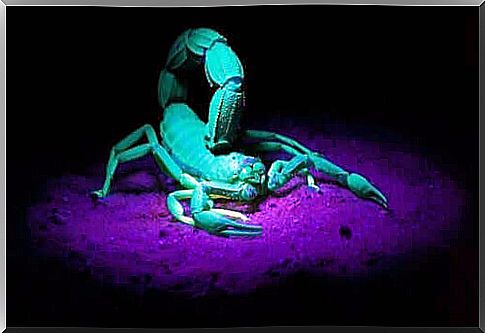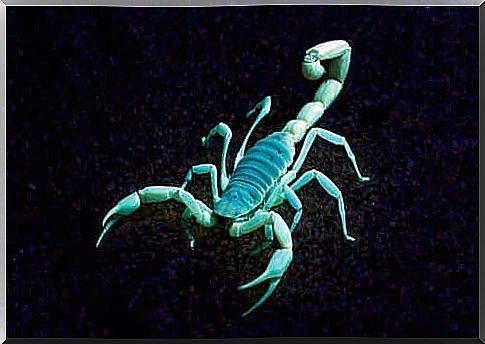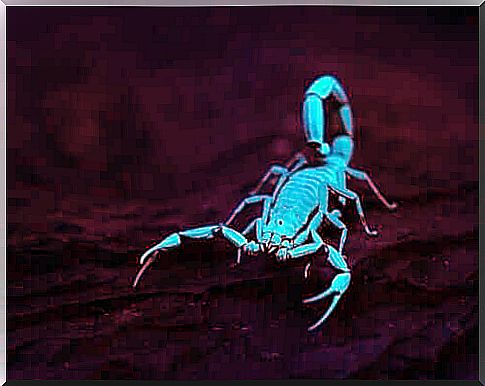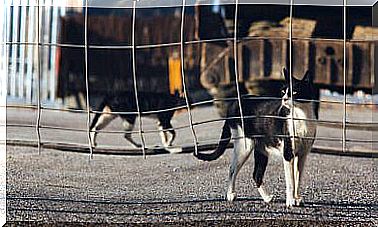Scorpions Glow In The Dark: What Science Says

Although this is the oldest order of arachnids, scorpions never cease to surprise us. Not long ago, several people marveled to find that scorpions glow in the dark. There are those who have wondered, in fact, if it is really possible or if it is a hoax of the web.
In the next few lines we explain if scorpions really glow in the dark and how they manage to do it. Don’t miss this article.
Do scorpions glow in the dark, myth or reality?
It may sound strange, but the truth is that there is a scorpion that glows in the dark. But that’s not all: in fact , fluorescence is an innate characteristic of all recognized scorpion species today.
So far, over 1700 species of scorpions have been cataloged, which are distributed mainly in warm and temperate countries. The ability to adapt and endurance, in fact, are characteristics par excellence of scorpions.
We generally tend to associate the scorpion directly with its powerful poison-containing spike. It should be noted that although all species contain certain toxins in their sting, only 25 species of the butide family are potentially dangerous for humans.
Nonetheless, there is another fascinating feature about these arachnids that still receive little attention. We refer, logically, to their wonderful ability to glow in the dark, or their natural fluorescence.

Why do scorpions glow in the dark?
In reality, there is not a single scorpion that glows in the dark, as already mentioned. All species emit very noticeable fluorescent rays when exposed to ultraviolet light.
This mechanism of scorpion fluorescence was discovered in 1954 almost simultaneously by two zoologists: the South African RF Lawrence and the Italian M. Pavan.
This important discovery sparked a chain reaction in research on these arachnids. Once aware of their natural fluorescence, it was possible to begin studying and observing the nocturnal habits of scorpions. This has allowed us to greatly deepen our knowledge about these animals.
It was later established that the intensity of the fluorescence emitted by a scorpion depends on its age and the hardness of its outer covering, called the cuticle. The harder the cuticle and the older the scorpion, the more intense the fluorescent rays emitted by its body will be.
The young specimens, in fact, show almost zero fluorescence. This mechanism is fully developed and can be easily observed starting from the third moult. Incredibly, the fluorescence is present even after the animal’s death.
Why are scorpions fluorescent?
The incredible fluorescence of scorpions is due to some chemical compounds present on the outer coat of the animal: β-carboline and 7-hydroxy-4-methylcoumarin.

The cuticle of the scorpion consists of a kind of rigid skin that acts as an armor ; this natural layer protects it from the attacks and adversities of the outside world. In addition to that, it shapes the body of these arachnids.
It has three different layers: the epicuticle, exocuticle and endocuticle. The chemical composition that allows the fluorescence is found in the external part of the exocuticle, or the hyaline exocuticle.
These substances are present in different species of plants and animals. We can find some β-carboline molecules even in the eyes of humans diagnosed with cataracts.
What is the fluorescence of scorpions used for?
Unfortunately we are not yet able to give an exact answer to this question. Scientists currently disagree about the function of fluorescence in scorpions.
Some hypotheses indicate that fluorescence could be used as a form of communication and recognition. Since scorpions are nocturnal animals, this ability could also grant them better eyesight and help them escape from prey.
On the other hand, the idea that fluorescent substances in the scorpion’s cuticle could act as a sunscreen is being studied . Their presence in the outer layer of the animal’s skin would protect it from ultraviolet radiation.









